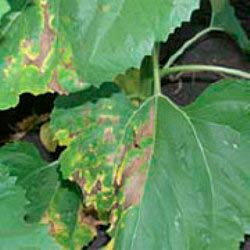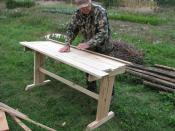Search
Login
Diseases of garden roses - prevention and treatment
Any changes on the roses can be a sign of disease, in such situations you can not hesitate - every hour lost causes damage to plant health. As in the case of a person, prevention is better than treatment, because careful care of roses and monitoring their condition is sometimes impossible for several reasons. If disease prevention has not helped, do not despair, there are effective methods of dealing with unpleasant surprises.
Content
- Garden Rose Disease Prevention
- Powdery mildew
- Gray rot
- Infectious burn video
- Rust video
- Black spotting video
- Verticellum wilting roses
Garden Rose Disease Prevention
The resistance of the variety to diseases does not guarantee full protection, in fact there are many factors that provoke rose diseases. Knowledge of agricultural techniques for growing roses and the attention of a gardener significantly reduce the risk of infection.
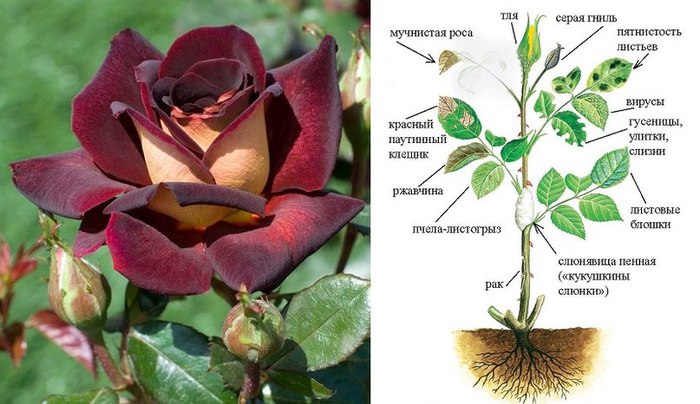
To begin with, roses need water, especially this applies to new plantings and a period of intensive growth - in May and June. Pay attention to the proper watering of plants, the spray on the leaves becomes the cause of the development of fungal diseases, try to water the roses only under the root. Roses are treated for diseases in warm weather.

A common mistake is excessive application of fertilizers, in particular nitrogen. Unlike other plants, roses do not need significant nitrogen supplements; it increases susceptibility to diseases.
Disease-like symptoms may indicate a lack of nutrients. For example, yellow spots on the leaves are the result of a lack of iron or magnesium, and gardeners spray roses from chlorosis.
In the case of phosphorus deficiency, the leaves do not develop and acquire a purple hue. Red spots cover leaves with a lack of nitrogen. A lack of nutrients is easily prevented by using appropriate fertilizers, and soil with a pH of 6-7 is recommended for roses to eat properly.
Roses, diseases and pests of which are sometimes not immediately noticeable, quickly die, get acquainted with common diseases of roses, how to treat roses in case of infection.
Powdery mildew
During the growing season a white coating appears on young leaves - powdery mildew. The infected leaves are deformed, the color changes from white to gray, the stems and flower petals are affected. Excessive watering of bushes or dry summer contributes to the development of the disease.

The source of infection can be fallen leaves and weeds among roses. Treatment consists in the use of fungicides, biological products. Among folk remedies, spraying liquid with the addition of soda (10 hl per 10 l of water) is effective; soda treatment is repeated after 3 days.
Gray rot
Watery, gray spots appear on the rose petals, rot completely covers the flower and infects the shoots. First of all, it is necessary to remove and burn infected shoots and inflorescences, with a strong defeat, the entire shrub is destroyed. As prevention, manganese fertilizers are used, which increase the resistance of plants to gray rot. Treatment is carried out by spraying with infusion of horsetail or Bordeaux fluid every five days.

Infectious burn
The shoots of roses are covered with brown or black spots, the bark of roses cracks, the disease spreads to the remaining branches. Fungal diseases of roses in spring or autumn affect the stems after planned pruning, plants become infected from dirty tools and damage to the bark by thorns of neighboring branches, an infectious burn often manifests itself in the spring.
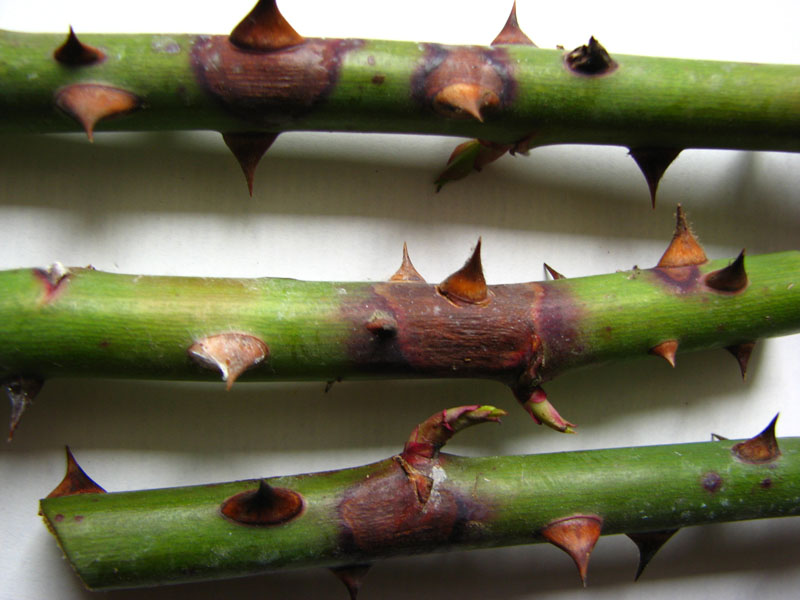
On infected shoots in the initial stage, the affected bark is removed with a sharp tool, the cut is treated with garlic and covered with garden var. In case of multiple lesions, diseased plants are burned. Spraying with 1% solution of copper sulfate after pruning shrubs will help prevent the disease.
Rust
When infected with rust fungus, the leaves become covered with small brown and yellow spots, the leaves are deformed, dry, fall off. The fungus hibernates on shoots and fallen leaves, frequent rainfall and watering contribute to the development of the disease.
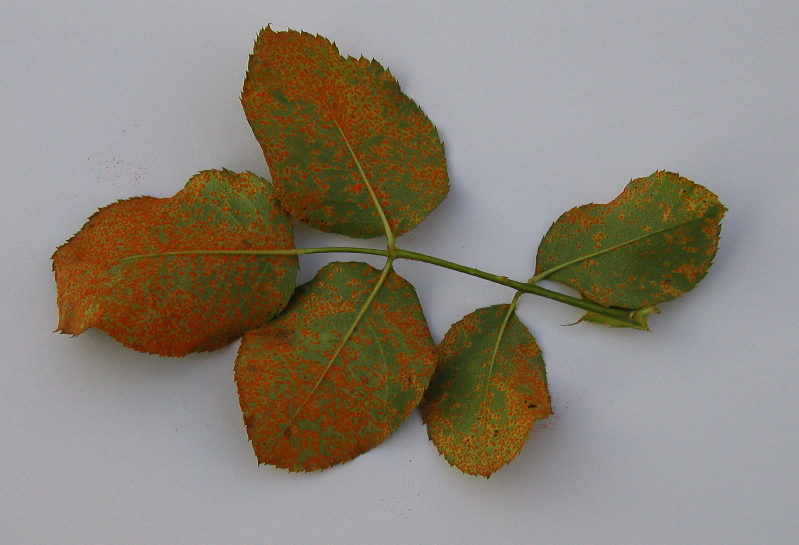
If roses were infected last season, shrubs are sprayed before the buds open with preparations containing copper or a 3% solution of iron sulfate. The infected shrubs of roses are dug up and burned; in the initial stages, you can try spraying with fungicides.
Black spotting
In the spring, gardeners notice brown and black spots of rounded shape on the yellowing leaves of roses, the affected leaves fall over time. Fungal disease black spotting hibernates on fallen leaves, during rains spores wake up and infect nearby plants, already infected parts of plants should be removed and treated with chemical agents 2-3 times every 10 days.
Fighting the disease is possible with improvised means, for example, it gives a good result to a decoction or infusion of garlic and onion husks, spraying with infusion is an excellent measure for the prevention and treatment of roses at an early stage of development of black spotting.
Verticillin wilting roses
The disease develops from the upper leaves, yellow leaves darken, young leaves wither in hot weather, shoots dry out, the bush does not develop. Roses are sick for several years, then the plant dies. The infected shoots are cut off with hot tools, neglected shrubs are burned, the site is treated with soil fungicides. It should be noted that the disease is transmitted from other plants, take care of the health of all garden inhabitants.
